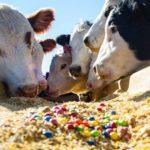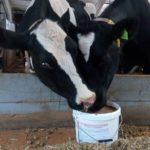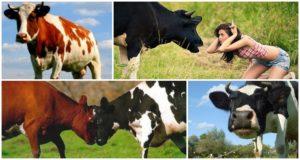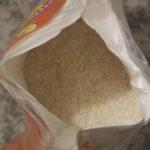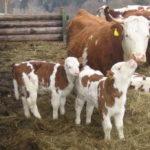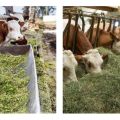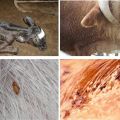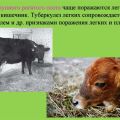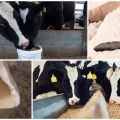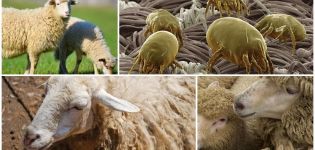Top 4 essential vitamins for cattle, when to start and how to feed correctly
High-quality balanced nutrition is the key to the health and normal development of the animal. Without enough vitamins for cattle, even very good living conditions will not lead to the desired results. Beneficial trace elements help boost immunity and promote high performance in bulls. When formulating the daily diet, the age and weight of the animals should be taken into account in order to correctly establish the amounts of supplements.
The value of vitamins for cattle
Even with good nutrition, animals require special supplements. These substances are beneficial for the milk obtained from the cow, which has a positive effect on milk yield. They also improve metabolism, strengthen immunity, and have a positive effect on the reproductive function of cattle.
Signs and at the same time the consequences of a lack of useful micronutrients are:
- the surface of the udder and genitals becomes jaundiced;
- the quality of wool deteriorates;
- the skin loses its elasticity;
- animals become lethargic;
- cows (including fattening ones) gain weight poorly;
- vision deteriorates;
- metabolism is disturbed;
- in calves, bone growth is disturbed, limb deformation occurs;
- gums bleed;
- the coat is thinning, ulcers appear on the skin.
All this confirms the importance of vitamins for the health and normal development of cattle. The microflora of the gastrointestinal tract produces a certain proportion of organic components, but their amount is not enough to replenish resources.
Varieties and role of individual vitamins
Bioregulators A, D, B12, E largely determine the health status of livestock, affect the formation of the animal's body. Useful trace elements are needed not only for calves, but also for adults.
Each of these components helps the organs to carry out their functions correctly.
Vitamin A
Otherwise retinol. The source of the trace element is plant food, where the vitamin is carotene. Once in the body, the substance is transformed into retinol, which ensures the functioning of the eyes and cells. With its lack, the following problems arise:
- Impaired vision and coordination.
- Inflammation of the eyes.
- Reduced resistance to infections of the gastrointestinal tract and the respiratory system.
- Complicated pregnancy and the birth of blind calves.
- Disruption of the reproductive system: delayed ovarian development, low sperm motility.
- Loss of fertility in bulls.
- Dysfunction of the central nervous system.
- Death of calves in winter.
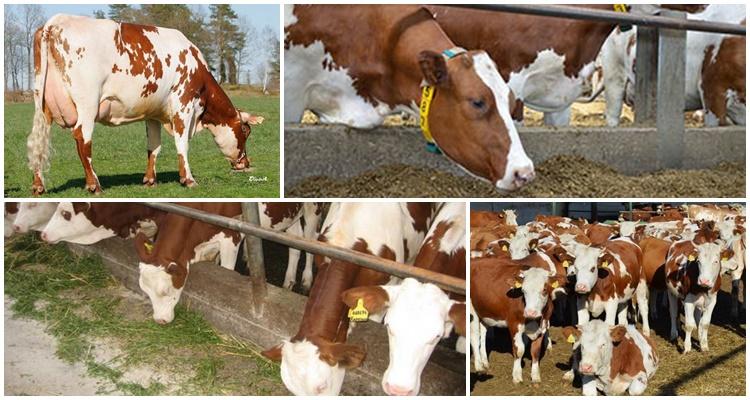
Vitamin A is essential for dairy cows.The stronger the lactation, the more retinol is required.
Vitamin D
With a lack of the element, it becomes impossible to assimilate calcium, which leads to the development of rickets in young animals. The source of the element is sunlight. In winter, with its deficiency, cows are irradiated with an ultraviolet lamp, which makes it possible to make up for the deficiency of the component.
The signs of a lack of this element are:
- Curvature of limbs in calves.
- Disruption of the gastrointestinal tract, decreased appetite.
- Loss of teeth in young and lactating cows.
- Partial paralysis after calving.
- Wild animal behavior.
Feeding cows with vitamin D increases lactation, which has a positive effect on milk yield.
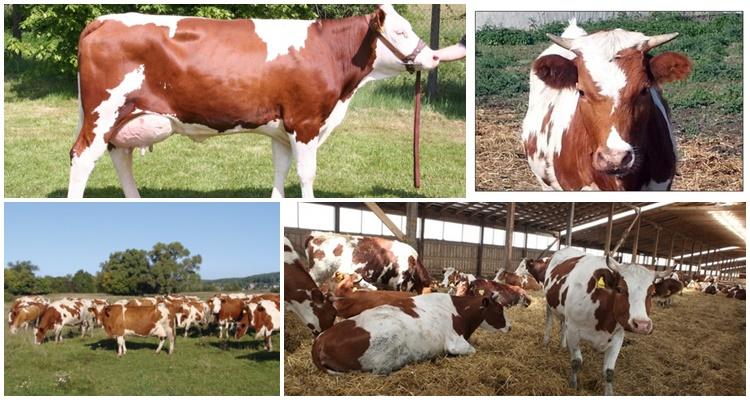
Vitamin B12
Vegetable food does not contain this component. Lack of substance leads to the following consequences:
- Metabolic and liver disorders.
- Milk fever.
- Poor coordination.
- Excitability.
- Skin diseases (eczema).
- Reproductive problems.
- Anemia.
- Slowdown in growth.
- Exhaustion.
- The birth of weak offspring.
Saturation of the body with vitamin B12 helps to build muscle mass, which is especially important for beef cows.
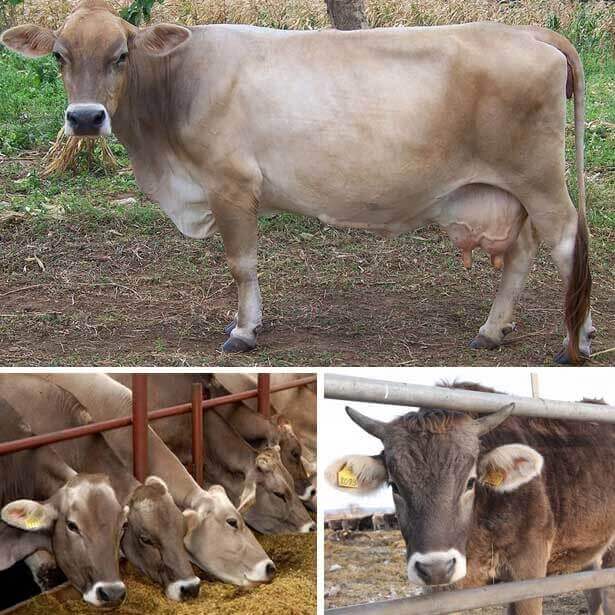
Vitamin E
Signs of a deficiency of this component are:
- Poor fat gain in calves.
- Slowdown in growth and development, which leads to exhaustion, muscle atrophy, paralysis.
- Disruption of the cardiovascular system.
- Incorrect work of the reproductive organs:
- loss of fertilization function in bulls, delayed ovarian development in cows;
- the inability to give birth to healthier offspring;
- inability to get pregnant;
- hidden abortion (embryo resorption).
And yet, despite the listed symptoms, it is practically impossible to identify a lack of vitamin E without the help of specialists. In adults, element deficiency is rare. Bioregulator E is used in combination with vitamin A: the components influence each other and enhance the effect of each of them.

At what age can vitamins be given
Young animals receive the necessary amount of vitamins from the moment of birth. The source is cow's milk. However, if childbirth took place in the fall-winter, the lack of nutrients should be compensated for by adding vitamin complexes for newborns to milk.
Daily intake
The daily volume of bioregulators is calculated based on the body weight of the animal and the planned productivity. The daily intake of vitamin A is 30-40 or 35-45 ME. The amount of vitamin D should be present in the diet of cattle in an amount of 5 to 7.5 IU. Bioregulator E is added in an amount of 100-200 mg.
How to feed calves correctly
Vitamin supplements are offered in the form of powders that are mixed with food. If this is not enough, drugs are administered intramuscularly, intravenously or subcutaneously. The best supplements are:
- "Gavryusha premix for calves";
- "Biomix for Calves Standard";
- Solvimin Selenium.
As for injections, they begin to be administered from six months. Injections are also given to bulls for faster growth. Popular supplements include:
- "Trivit";
- "Tetravit";
- Eleovit.
Direct sources of vitamins:
- milk (gives young animals all the necessary components);
- hay (calves receive vitamins D, B3, carotene);
- fresh grass (source of bioregulators E, B2, B3)
- carrots (rich in carotene);
- grain (includes B1, B5).
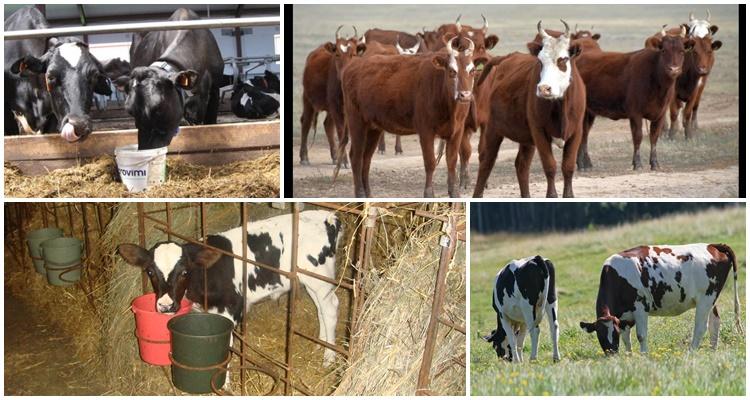
How to combine taking vitamins with feeding
Powders are usually mixed with feed. Obviously, the injections do not depend on the usual nutrition, so the question of combining does not arise.The main task of the farmer is to provide young individuals with a daily dose of useful trace elements, regardless of the form in which they are given to the animals. It is important to diversify the diet of cattle by adding vegetables, root crops and compound feed to the diet.
When compiling daily portions, the weight and age of the livestock are taken into account.
Vitamins are useful substances that directly affect the growth and development of animals. Deficiency of one or another bioregulator leads to diseases and deviations, and also reduces productivity - the amount of milk yield and meat that can be obtained from cattle. Therefore, it is important to notice the signs of a lack of components and to restore the amount of bioregulators the body needs in a timely manner.
